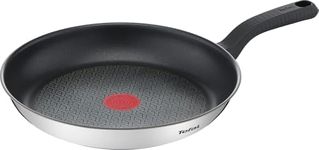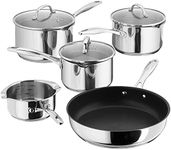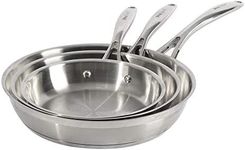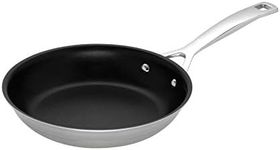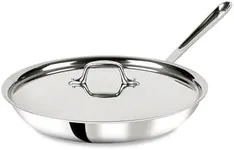Buying Guide for the Best Stainless Steel Pans
Choosing the right stainless steel pan can significantly enhance your cooking experience. Stainless steel pans are known for their durability, resistance to rust, and ability to evenly distribute heat. When selecting a stainless steel pan, it's important to consider several key specifications to ensure you get the best fit for your cooking needs. Here are some important factors to consider:Material CompositionStainless steel pans are often made from a combination of metals, including chromium and nickel. The most common types are 18/10, 18/8, and 18/0 stainless steel, which refer to the percentages of chromium and nickel. 18/10 stainless steel contains 18% chromium and 10% nickel, making it highly resistant to rust and corrosion while providing a shiny finish. 18/8 is similar but with slightly less nickel, and 18/0 contains no nickel, making it less resistant to corrosion but more affordable. If you want a pan that will last longer and maintain its appearance, opt for 18/10 stainless steel.
ConstructionThe construction of a stainless steel pan affects its performance and durability. Fully-clad pans have layers of stainless steel and aluminum or copper throughout the entire pan, ensuring even heat distribution. Bottom-clad pans have a layer of aluminum or copper only at the base, which can lead to uneven heating. Fully-clad pans are generally better for consistent cooking results, while bottom-clad pans may be suitable for basic cooking tasks. Consider fully-clad pans if you frequently cook delicate dishes that require precise temperature control.
Handle DesignThe handle design of a stainless steel pan can impact comfort and safety. Look for handles that are ergonomically designed and securely riveted to the pan. Some handles are designed to stay cool during cooking, which can prevent burns. Long handles provide better leverage and control, while short handles are easier to store. If you cook often and for extended periods, prioritize pans with comfortable, stay-cool handles.
WeightThe weight of a stainless steel pan can affect its usability. Heavier pans are generally more durable and provide better heat retention, but they can be difficult to maneuver, especially when full. Lighter pans are easier to handle but may not distribute heat as evenly. If you have strength limitations or prefer easy handling, opt for a lighter pan. For more robust cooking tasks, a heavier pan may be more suitable.
SizeStainless steel pans come in various sizes, typically ranging from small (8 inches) to large (12 inches or more). The size you choose should depend on the quantity of food you usually cook and the size of your stovetop. Smaller pans are ideal for individual meals or small portions, while larger pans are better for family-sized meals or batch cooking. Consider your typical cooking needs and the space available in your kitchen when selecting the size.
CompatibilityNot all stainless steel pans are compatible with all types of stovetops. Some pans are designed specifically for induction cooktops, while others work well with gas, electric, or ceramic stovetops. Induction-compatible pans have a magnetic base that allows them to heat up efficiently on induction cooktops. If you have an induction stove, ensure the pan is labeled as induction-compatible. For other stovetops, most stainless steel pans will work, but double-check the manufacturer's recommendations.
